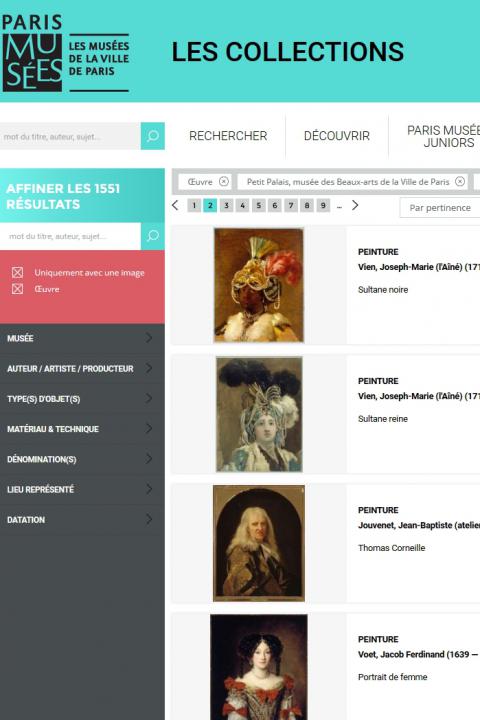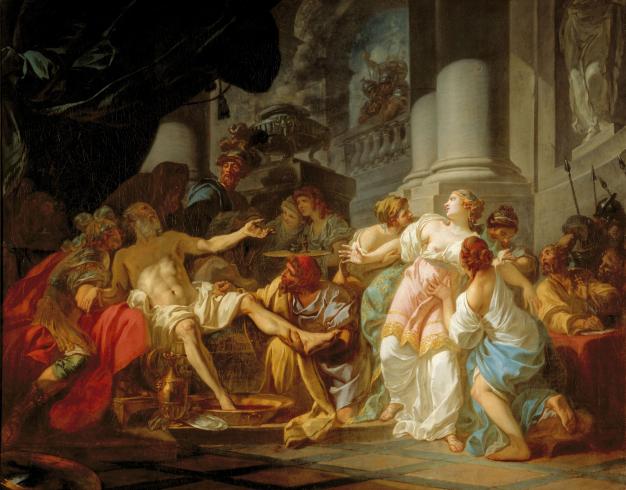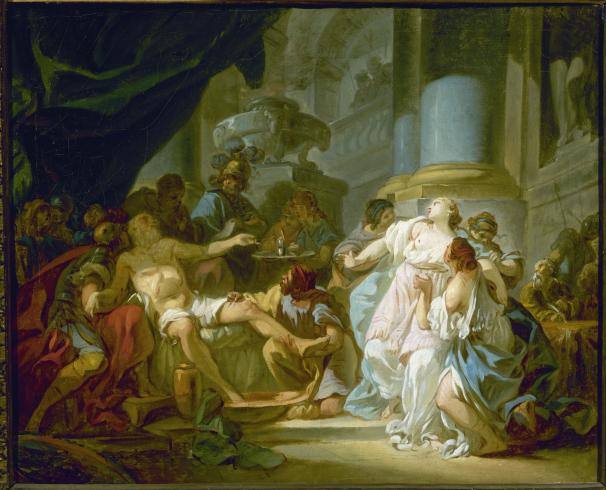The Roman philosopher Seneca was accused of taking part in a conspiracy against Nero, and was ordered to commit suicide.Seneca accepted the sentence and his wife chose to die with him.The husband and wife open their veins, but death does not follow swiftly.
Seneca accepted the sentence and his wife chose to die with him. The husband and wife open their veins, but death does not follow swiftly. Therefore Seneca asks the servant women to lead his wife away so that neither one of them might weaken at the sight of the other’s suffering. Pauline survives and is spared by the emperor. A doctor slashes the philosopher’s ankles to make the blood flow more quickly and a slave hands him poison. In the background, a centurion dispatched by Nero assists at the execution of the death sentence. On the right, a disciple writes down the last words of the philosopher, whose demise is an example of the highest moral virtue in the face of tyranny.
The swags around the tall columns and monumental statues are more reminiscent of an opera set than the sober dwelling of a Roman exponent of stoicism. One should note the theatrical gestures of the figures, the elegance of the female apparel and the cheerful palette of pinks and blues.
This decorative composition in the Rococo manner sits awkwardly with the austerity of the subject set by the Academy for the Grand Prix de Rome in 1773. The jury was not convinced by David’s painting and yet the young painter was already submitting work for the third time. He had to wait another year before winning the Prix de Rome which opened the doors of the Eternal City to him. In Rome, David forsook the charms of the Rococo to became a major neo-classical artist.
M. A. P.

City of Paris municipal collection's website
The collections portal can be used to search the collections of Paris’s 14 municipal museums (approximately 336,000 works, including 43,000 belonging to the Petit Palais).
It is also possible to download around 12,000 images of the museum’s works free of charge.
Access the Museums of the City of Paris collections portal
Extern databases
Discover a selection of databases online presenting works from the Petit Palais or documents concerning the history of the museum.


